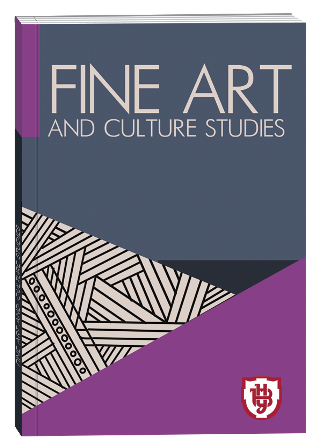BIOCLIMATIC MODELING: INTERPRETING THE CLASSIFICATION OF DESIGN OBJECTS
DOI:
https://doi.org/10.32782/facs-2025-1-39Keywords:
bioclimatic modeling, design objects, environmental design, sustainable developmentAbstract
The purpose of the study is to clarify the classification of design objects based on the analysis of the level of interaction with the natural and climatic environment in material and subject and functional and procedural manifestations in the context of bioclimatic modeling. The methodology is based on an analytical study of existing design classifications in relation to bioclimatic modeling, focusing on the material-subject and functional-processual interconnection of design objects with both artificial and natural environments. This approach relies on the results of a comparative analysis of theoretical principles and specific examples in the formation of design solutions for environmental design. The study proposes a classification of design objects that takes into account their interaction with the natural environment. Three main types are identified: natural-object, artificialobject, and diffuse-object design. Each type is analyzed using examples of environmental design. In the bioclimatic context, the classification takes into account the degree of interaction with the natural and artificial environment: from full to minimal interaction. An important conclusion was the realization that each design object interacts with the artificial and natural environment in different ways, which requires individualization of solutions in bioclimatic modeling. The scientific novelty lies in the formation of a new view on the classification of design objects with an emphasis on bioclimatic modeling, which expands the traditional framework for designing design objects and encourages environmental innovation based on the impact of natural and climatic conditions. The results of the study are of practical value for designers, architects, and other professionals involved in the creation of sustainable and environmentally friendly products and environments. The proposed classification of design objects allows for more efficient implementation of bioclimatic solutions in practice, ensuring sustainable development in various design areas.
References
Абизов В. Пропозиції щодо методики дизайн-проектування об’єктів середовища. Актуальні проблеми сучасного дизайну: тези ІІ міжнародної наук.-практ. конф., м. Київ, 23 квітня 2020 р. Київ, 2020. С. 138–142.
Данієлян А.Є. Інструментальні засоби створення об’єктів еко – дизайну на основі методологічного підходу : дис. … канд. техн. Наук: 05.01.03. Київ, 2018. 184 с.
Дизайнерська діяльність: екологічне проектування / О.В. Кардаш та ін. Київ: УкрНДІ ДЕ, 2016. 196 с.
Кривенко О.В. Біокліматична архітектура як явище в екологічній архітектурі. Енергоефективність в будівництві та архітектурі. 2013. № 4. С. 155–158.
Луговський О. Традиції та інновація в сучасній проектній практиці промислового дизайну: матеріали ІІІ міжнар. наук.-практ. конф., м.Херсон, 18 – 20 квітня 2017 р.. Херсон: ХНТУ, 2017. С. 19–21.
Малік Т.В. Просторово формуючі напрями дизайн-діяльності початку 21 століття. Сучасні проблеми архітектури та містобудування. 2011. №27. С. 89–94.
Основи дизайну архітектурного середовища: Підручник / В.О.Тімохін та ін. Київ: Основа, 2010. 395 с.
Пискун О.М. Основи дизайну: навч.-метод. посіб. Чернігів: ЧДПУ, 2009. 40 с.
Прищенко С. Теорія та методологія дизайну: навч. посіб. Київ: Альтерпрес, 2010. 354 с.
Тімохін В. Pro «Дизайн архітектурного середовища». Нариси з історії українського дизайну ХХ століття: зб. статей Ін-ту проблем сучасного мистецтва НАМ України, м. Київ: Фенікс, 2012. С. 173–178.
Yeang, Ken, (1994). Bioclimatic Skyscrapers (p. 137). London, Zurich, Munich: Artemis.







